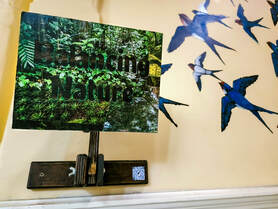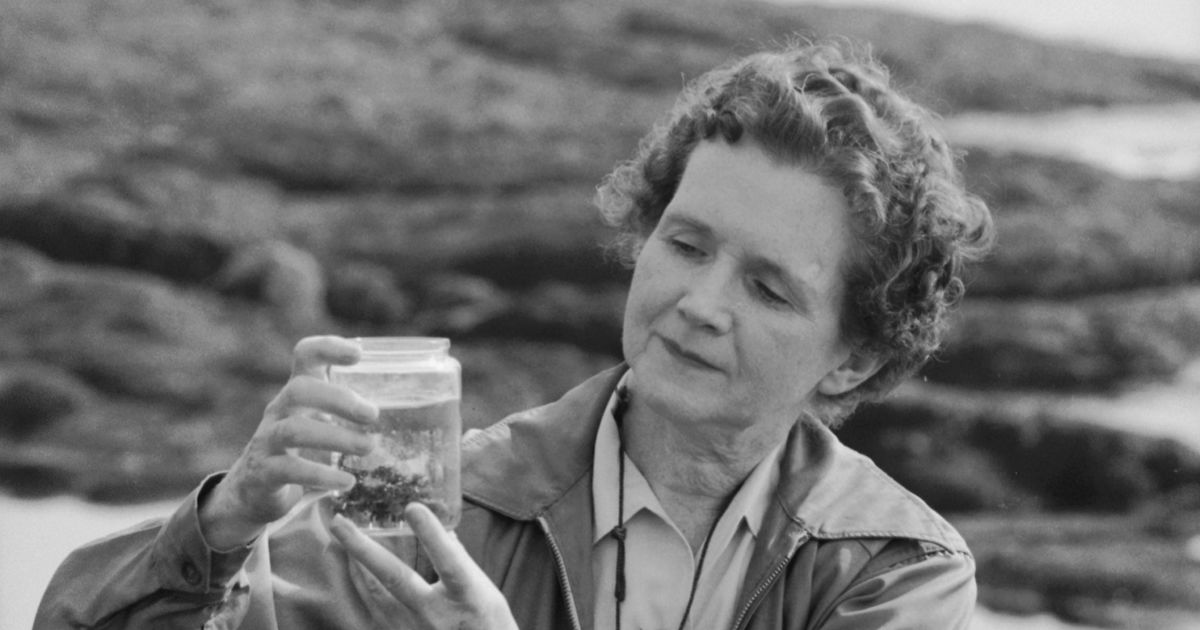During the Cold War as technology was evolving, the common opinion was that humanity was and should be slowly starting to control nature. Rachel Carson, contrary to this common belief, wrote in her book Silent Spring, ”The balance of nature plays a major role in the survival of [hu]man.” Rachel Carson was a well-known marine biologist, writer, and environmentalist. Most of her work was done during the Cold War and she was mainly known for exposing the injustices of DDT.
DDT was a pesticide that was considered to be a miracle metical substance. It was used to stop the spread of diseases like malaria that were killing hundreds of troops. While this was good for some, people went over the top with this drug and would cover cities, beaches, and even crop-dusting entire islands. People didn’t really know the side effects of DDT and corporations selling it wanted to keep it that way. At the time, Rachel Carson was working with her team to explore the effects of DDT on the environment. They found out that it had really negative effects on the environment and was harmful to anything that ate the bug that was infected with DDT. It also had damaging effects on ecosystems and would have long-lasting effects if not fixed. In response to this Rachel Carson wrote the best seller and controversial book, Silent Spring. Carson got a lot of push back from the public, other “scientists”, and especially the companies producing DDT like the Montrose Chemical Corporation of California. She didn’t give up though and was extremely persistent. Carson tried in lots of ways to get the word out. During this time she was diagnosed with cancer but never talked about it publicly until she died on April 14, 1964. After she died other scientists vetted her work and her work was proven right. A bill was then created in her honor to ban DDT and force more research to go into medical substances before widespread use.
DDT was a pesticide that was considered to be a miracle metical substance. It was used to stop the spread of diseases like malaria that were killing hundreds of troops. While this was good for some, people went over the top with this drug and would cover cities, beaches, and even crop-dusting entire islands. People didn’t really know the side effects of DDT and corporations selling it wanted to keep it that way. At the time, Rachel Carson was working with her team to explore the effects of DDT on the environment. They found out that it had really negative effects on the environment and was harmful to anything that ate the bug that was infected with DDT. It also had damaging effects on ecosystems and would have long-lasting effects if not fixed. In response to this Rachel Carson wrote the best seller and controversial book, Silent Spring. Carson got a lot of push back from the public, other “scientists”, and especially the companies producing DDT like the Montrose Chemical Corporation of California. She didn’t give up though and was extremely persistent. Carson tried in lots of ways to get the word out. During this time she was diagnosed with cancer but never talked about it publicly until she died on April 14, 1964. After she died other scientists vetted her work and her work was proven right. A bill was then created in her honor to ban DDT and force more research to go into medical substances before widespread use.
The Wayfinder that I created is composed of two collages on the front and back sides, with text cut out of the one on the front. The text reads “Balancing Nature,” which is a reference to Carson's once unpopular belief that the Balance of Nature plays a major role in the survival of humankind. The collage on the front is of trees and greenery for nature and ecosystems, and the collage on the back is of water and aquatic life to represent her work as a marine biologist. The two collages compliment each other and reference healthy ecosystems.
Over the course of this class, everyone had sketchbooks that they would use to record any notes, brainstorming, or pictures of anything that we were doing in the class. A lot of the notes that I have taken are about the sculptures that we have been looking at like the AIDS Memorial Pathway, the BLM Mural, and the controversial George Washington Monument at UW. There are lots of pictures from when we went to the Pacific Bonsai Museum to study living memorials, which I personally really enjoyed. In my sketchbook, there are also lots of image generation examples, which is a practice of taking an observation and turning it into a visual. You brainstorm words that have a relation to the art, then find a corresponding word related to that thing. You can then make an image-based on the corresponding word that you chose. There are quite a few of these in my notebook and they were helpful later because we could apply that to our Wayfinders.
ARTIST BIO:
Zander Stroh, He/Him, Class of 2025
I am 15 years old and some of my hobbies are engineering, soccer, photography, and skiing. Also thanks to James Blake who made the wooden platforms for the Wayfinders.
Zander Stroh, He/Him, Class of 2025
I am 15 years old and some of my hobbies are engineering, soccer, photography, and skiing. Also thanks to James Blake who made the wooden platforms for the Wayfinders.




















